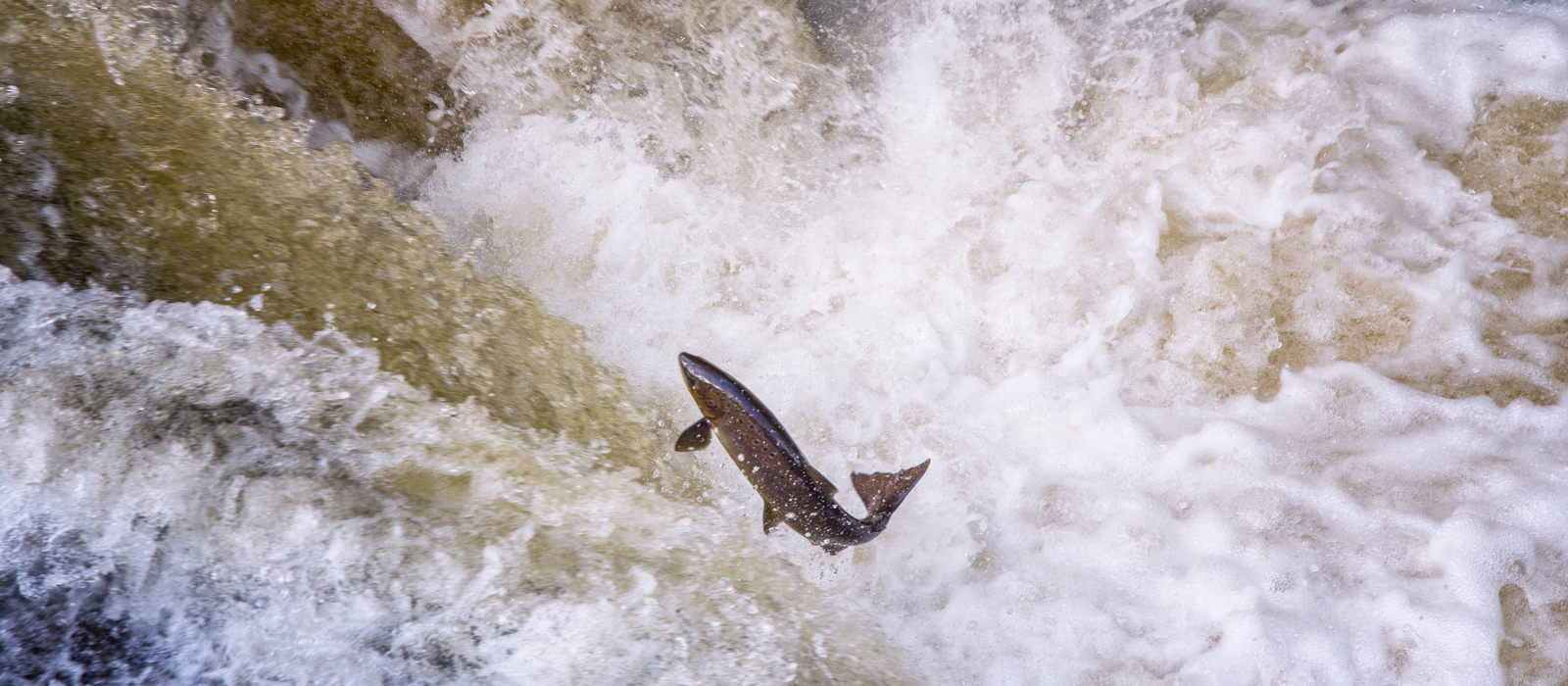
[00:00:00] Crystal: I’m Crystal DiMiceli and welcome to the Forces for Nature show.
Do you find yourself overwhelmed with all the doom and gloom you hear of these days? Do you feel like you as just one person can’t really make a difference? Forces for Nature cuts through that negativity. In each episode, I interview somebody who’s doing great things for animals and the environment.
We talk about the challenge they’re addressing, the solution they have found, what keeps them going, and we’ll leave you with practical action tips so that you too can become a force for nature. I’ve been wanting to do an episode about wild fisheries versus fish farming, otherwise known as aquaculture for a while now, but it’s quite a complex subject. For me personally, the desire to protect what’s wild is incredibly important, but it would be naive of me to deny the fact that there aren’t enough wild fish stocls left to provide for a growing human population.
Without question, we need to fix the rampant and unregulated overfishing that’s occurring throughout the world. It’s now estimated that two thirds of the world’s fish stocks are either fished at their limit over-fished or in crisis. This is not even taking into consideration pollution, acidification, and the climate change challenges that they’re facing.
We are literally on a path where there will be no fish left in the sea. But until we can get those issues fixed aquaculture has stepped in to supplement as an alternative. Though not without its own share of controversy. The practice can and has had disastrous consequences, environmentally and socially. So where’s the middle ground? Today, we’re going to look at the wild versus farmed fish debate through the story of salmon. I talk with Parker, Jefferson, who is someone who’s a part of a success story for wild salmon in Cowichan, Canada. After retiring from film production, he and his wife moved to that area to be able to pursue his favorite pastime fly fishing.
As it turns out he’s just as adept at saving them as he is catching them.
Hi, Parker. Thank you so much for joining me on forces for nature. It’s so great to have you.
[00:02:18] Parker: Well, thank you. And I’m glad to be here.
[00:02:21] Crystal: In my introduction. I mentioned how wild versus farmed fish is a complex debate. And I want to go into that complexity with you today. But before getting into the specific challenges of salmon aquaculture, I would like to touch upon the importance of salmon to the indigenous tribes of the region you’re in.
This is something of deep cultural importance that can not be overlooked.. Can you speak to that a little
[00:02:44] Parker: bit? Yes, absolutely. The indigenous peoples of British Columbia have traditionally relied on salmon as a major source of protein for them in the particular area where I live on Vancouver island, the Cowichan tribes would actually every summer canoe across the Strait of Georgia to the mouth of the Fraser river.
And they had actually land there where they would camp in the summer and harvest salmon all summer long, preserve them by smoking mostly, and then bring them back for consumption all winter. This would occur with every first nation in the BC coastal region and actually the west coast of north America, where they would definitely rely on salmon for much of the protein that they would require for their people.
Through the winter and because of the abundance of salmon, we have some of the largest populations pre-contact of first nations in our region, in the Southern end of Vancouver island in particular, because of the tremendous abundance. Of salmon that was available. They supplemented with clams as well, which are another really important food source and other things.
But really they would actually be using salmon in some ways to trade with interior tribes so that they could get some of the things that the interior folks would have. But yes, it’s, it’s been extremely important to them throughout history for them. It remains. So today we work with our first nations partners here in the Cowichan.
To ensure that they have access to the salmon that they would require. And, uh, the, the BCM, federal governments also recognize that the first nations have a right to salmon. One of the first rights to salmon before any commercial aspects are taken into consideration.
[00:04:35] Crystal: Oh, great. And I’m excited to hear more about how you work with them as we talk further about.
Now let’s pivot into the complexity and the challenges of salmon aquaculture.. Can you tell me about the challenges that your region is facing with the farmed salmon industry?
[00:04:55] Parker: Yeah, certainly what’s been going on since about the late eighties, when it really first started. Open pen fish farms have been placed in fjords.
The British Columbia coast line is, is really remote. There’s no roads along it because it’s extremely rough terrain, high mountains, long fjords. There are no roads that go along those. So it’s all access by boat and. Mostly Norwegian companies have found this area to be very similar to Norway with the long fjords with rivers coming in and so very nice sheltered areas in which you could put these open cage salmon farms. In the early stages, they tried using Pacific salmon. So we have five species of Pacific salmon here, and they would try to raise them in the net pans, but they found that they just weren’t suitable. And in the end it has have transitioned almost entirely to using Atlantic salmon, which of course.
On the west coast of north America. And, but over the years, the Norwegian companies that really specialize in this type of fish farming have bred Atlantic salmon to grow quickly in a confined net pen. And, you know, so that they get a good return on their investment quickly. So they grow quickly and they can get these fish out to market much better, I guess, in more volume than you would find from Pacific salmon. So with that, we have introduced the foreign species into the water. These cages, if you will, are just open pens, they’re nets where the water flows from the ocean, right through it. And with that has come a couple of problems.
One of them is with sea lice, infestations. When you have a, essentially a feed lot. Full of fish that concentrate in one small area, sea lice will breed very, very rapidly on them. And the other problem we’ve had is viruses. That have been introduced from the eggs that are used to raise these salmon.
These viruses would be endemic in the Atlantic, but have not been seen in the Pacific ocean. And so those viruses then can transfer to our wild fish and that can cause problems. Most of the farms are located in sheltered waters, but. Many of them have been located on migration routes for our wild Pacific salmon.
They migrate out of their natal rivers and up through between Vancouver island and the coast of British Columbia. And they then have to run the gauntlet of these fish farms and the sea lice will attack these very small juvenile salmon, but when they get even one or two sea lice on them, that will kill them.
And so they have found many studies have been done to see that fish farms producing lice can really seriously affect the wild salmon as they migrate through their net pens. Yeah.
[00:08:05] Crystal: So, I mean, they’re essentially raising what could be an invasive species. If these Atlantic salmon were to escape, that is a serious concern.
Invasive species is one of the biggest threats to biodiversity. And what is it, what is the pollution issue like in, in those areas with such a high concentration of feces coming from the nets?
[00:08:28] Parker: Yeah, absolutely. That’s another problem. They’re creating dead zones on the sea floor because of course. All the feces and other things that go on and up underneath the fish cages and occurrence can spread that around a little bit.
Many of the indigenous people who live near these fish farms notice that their clam beds. Can be affected and shrimp and prawns as well, which they like to rely on, can be affected by these dead zones. They’re sort of sucking all the oxygen out of the area, so nothing can really grow underneath these things.
That’s one of the big issues with the open cages is a tremendous amount of detritus that comes down from
[00:09:10] Crystal: what about wildlife in the area of these farms? How were they.
[00:09:15] Parker: Well, there’s several things that have happened over the years. The fish farms initially found that seals would attack the pens and actually bite through the pens and get out the salmon that were in there.
So they use acoustic devices, essentially underwater noise makers that pinnipeds, which are seals. They had hoped it would repel them and keep them away. Also what was found? Alexandra Morton is a researcher. Who’s done an awful lot of work on these issues and she lives right in the area where most of these fish farms have been located.
She initially went to the area to study Orca whales killer whales. And at one point when the fish farms came in after she’s first started her studies and then these acoustic noise devices were put in the water to. Discourage the seals from entering into the area. They found it was extremely hard on orcas as well, because they are very sensitive hearing and they communicate through the water over tremendous distances.
And she found at one point that the orcas that you were studying were spy hopping, which means. Sort of sticking most of their head out of the water as much as they could, as they swam by. And eventually they decided that had to have been because they were so deafened by the noisemakers and they simply left the area.
The Orca she was studying were where they like to be to forage for salmon. This is a pod of local killer whales that only want to eat salmon. And they had to leave the area because they couldn’t stand the noise and they have not come back yet. And that’s probably 20 years ago, the seals. Just went ahead and didn’t care about the noise because they had such easy access to protein and they found many of them were going deaf because they would just go in there to eat and didn’t care about the noise.
So certainly it affected wildlife
[00:11:19] Crystal: and these farms are also indirectly affecting wildlife and the ecosystem on land too. How so?.
[00:11:25] Parker: The knock on effect of the reduction of our Pacific wild salmon, which many people attribute to the presence of these fish farms in their migration routes, which have drastically reduced salmon numbers.
That goes to a much bigger story where so much of the ecosystem of British Columbia in the coastal region. Is supported by salmon. And by that, I mean, our Pacific salmon die after they spawn. And so they go into their natal streams all up and down the whole coast, they lay their eggs and then their bodies stay in the river to provide nutrients.
For not only their offspring, but as it turns out, the entire ecosystem and many studies have been done about this were looking for an isotope of nitrogen, N15, which is very common in Marine environments, but not terrestrial environments. So by studying the concentration of the isotope of nitrogen N15 in trees and bushes way, Quite a ways away from any river, but certainly all around the rivers.
They find the trees have a lot of this nitrogen in them. Obviously it’s a nutrient that helps them grow. And of course with that, what’s happening is that the bears will eat the fish and they will drag them from the rivers up into the forest. What’s left, will decompose, and that’s how the nitrogen 15 gets into the ecosystem.
So it supports the trees, the bears, the whales. The seals, the Eagles, everything has evolved in British Columbia to depend on mass quantities of returning salmon every fall and in areas where fish farms have been located in say an inlet with the river at the mouth of. That used to have salmon in it. Many of those runs have gone virtually extinct.
So the bears are finding little to eat in the fall when they need the fat, before hibernation and that it goes through the entire ecosystem. So the collapse of the British Columbia wild salmon is a really big ecological problem, and it is being exacerbated by these open cage fish farms. And finally, Uh, enough science and studies have been done to convince the government that this is what’s happening.
First nations also are leading very much the opposition to these fish farms. They have occupied them. They have wanted them to leave for many years because they can see what’s happening to the ecosystem as a result of the collapse of, of the fish stocks. That may not be the only reason they’re collapsed.
But as it turns out, the fish stocks in British Columbia, wild fish stocks have reduced by 90%, since about 1990. So that’s a tremendous decrease in the salmon coming back to provide the nutrients for the entire ecosystem. So this is a very big problem that we’re facing.
[00:14:42] Crystal: When did you say the farm started to appear
[00:14:45] Parker: in the late eighties is when the first fish farms were still.
And yeah. So if we take 1990 as a base, the wild salmon have collapsed to the extent that there’s about 10% of them left. And so it’s really important for us to do what we can to rebuild these stocks. You know, certainly fish farms. Aren’t the only reason climate change is a big part. They’re facing challenges in the open ocean with respect to warming temperatures and changes in the, the biosphere of the ocean as a result of those warmer temperatures and foraging and so on.
So that’s a problem, but to, you know, we have to address whatever we can to help our wild stocks to rebuild again.
[00:15:29] Crystal: Absolutely. I mean, entire ecosystems are dependent on upon it.
Well, let’s move on to some happier news. Let’s speak about your river.
Can you tell me about the river that you live on? I know it’s been quite famous for many, many
Parker: years. Yeah. The Cowichan river is a, both a federal and a provincial heritage river. So it means it’s got a special status. Historically, it was one of the world’s finest destinations for fly fishing. As it turns out, people would come from Europe.
In the early part of the 20th century, and that was quite a journey. You would have to take a boat across the ocean and then a train across Canada and then a couple of boats to get to Vancouver island. And then like a stage coach to go up the Cowichan river that took a while and they would, they would come, they would come all the way from Europe. Francis Ferdinand,.
I don’t know if you recall that name, but he’s the guy that was assassinated that started world war One. He was a regular on the Cowichan river before those days. So lots of people came from all over the world to fish for, for trout primarily, and some salmon in the Cowichan river. So it has a tremendous history.
We’re fortunate in that there is a very large lake at the headwaters and that lake is a buffer for us. It really allows us the opportunity to kind of manage the flows of the river. There is a weir at the outlet of this really large lake that before it goes into the Cowichan river itself, which is about 50 kilometers and it flows into the Pacific ocean.
So with that weir, in the summertime, we’re actually able to hold back a bit of the water that we get in the spring, rains and, and carefully measure the flow rates that we have in the river throughout the summer. And that really enables us to help the salmon to thrive in the river. When the salmon eggs hatch for the emerging salmon fry to find shelter and food, we know we must keep the river at a certain level.
It happens to be 25 cubic meters per second. And we like to hold that right through until about June. And then we can reduce the flow. After the salmon have migrated out to the ocean or else have grown to a sufficient size to be able to stay in the river. Some salmon species stay in the river for a year or two other salmon species will just immediately go out to the ocean when they hatch, which is right about now starting February, March, April is when all the salmon fry are starting to hatch.
So we control the flow in the river very carefully. And we’re having some success with this back in 2009, our Chinook salmon were down to 500 spawning adults. And for the last 500, yes. And, and for the last few years, while probably the last five years now, we’re above 20,000. And we think that’s partly because of the flow management that we’re doing.
Also, we do a lot of habitat restoration. There were some areas where silt was entering the river at high water events, glacial till, and we have mitigated that to keep that silt out of the river. What was happening was the salmon come in the fall, they lay their eggs in the gravel. And then during the winter storms, tremendous amounts of silt would be deposited over those eggs.
And that would smother them. They require oxygen and that would cut the oxygen off. So we found egg to fry, survival rates and the lower part of the river, where the silt was, was about 5%. And once we went together and, and fixed that problem by creating a rip rap and, and stopping that silt from getting into the river, the rate of fry survival rate in that part of the river is now 85%. So it’s a huge difference. And so that whole, the whole bottom part of the river. Is now very much productive where it was really essentially dead to salmon. So those types of things all added up. Like I say, we cooperate very much with our first nations and with all levels of government, we get funding.
We have a tremendous volunteer network, a whole bunch of NGOs that work together on all of these issues and, uh, and we’re having success. So it makes it kind of enjoyable to go out and do something that, you know, it was going to make a day. That’s
Crystal: incredible. I mean, I love the stories of when multi-stakeholders come together and.
Create wonderful change. Was it, was it easy to get all of the stakeholders on board? I mean, I can think of local issues that I would like to tackle, but I wouldn’t even know where to begin. Do you have any advice on how to start something like that?
Parker: You know, it, it, it seems to been organically evolved.
I’ve only been in the area. I retired and moved there in 2006. And that’s when things were already in swing there, they’re actually doing that a mitigation project that I was talking about with the silt that was happening the year that we moved in. And it’s only about half a kilometer from my house. I live on the river.
And so when I saw that was going on, I thought, wow, this is pretty cool. How do I get involved? It turns out that there’s something called the Cowichan stewardship round table that was starting. Just before I arrived there, I’m now the co-chair of that organization. But back then I w and it’s open to everyone who wants to come and just sit and listen.
And there’s usually about 50 people. We get together every month. We have representation from all levels of government municipal, provincial, federal, and, and representation. From first nations, we have the largest, first nation in British Columbia in Cowichan. And so we sit around a table and actually tomorrow morning is our next meeting.
And I’ll be chairing it with a zoom from here and everyone. At that attends first talks about what they’ve done in the last month. So someone from the birds will talk about how the bird count has gone. And we hear from first nations, what they’re doing, what their challenges are. And everybody speaks for a couple of minutes all the way around the table.
And then we’ll, we’ll get a really good idea of what everyone is doing in their particular area. Also, it’s a great place to. Uh, for people to connect.
At the coffee break, they walk over and talk to somebody, which is exactly what I did and say, hi, this is really cool. I want to help with say fry rescuing or whatever, what we should call so-and-so or here I am. And so we’re all able to help each other and it’s, it’s really quite productive. And so, you know, there’s just this tremendous spirit of cooperation in our community, and it is unusual.
It’s not, there’s not a lot of places where this is happening in Canada. We’re one of the few jurisdictions who have elected green representatives to the governments. We just have that sense here in the Cowichan, and everybody likes to work together. And the, and the thing is, then you get to know everybody in every position, they become friends, we have social events, we all get together.
And so if something happens, you know who to call, or you can find someone who can put you in the right direction to help out with any kind of an issue.
I say, we do get funding support from the government because of all the things that we’re accomplishing and, and it’s really a pleasure to work in that environment as a volunteer.
Crystal: Well, if there is a way for you guys to figure out how to bottle up your processes and the magic that you have, you’ll
Parker: save the world. It’s yeah, well, you know, it’s mutual respect and really learning from our indigenous. Partners and, and hearing their oral history. You know, the, one of my friends is the biologist for Cowichan tribes, and he relates stories that his grandfather told him about how many salmon there used to be in the bay, where he would get in a canoe and, and want to go visit someone on one of the adjacent islands and the salmon would just be bumping into his canoe as he was paddling. It was just like constant bumping of thousands and thousands of these Chinook salmon. So they have the oral history, they know what it was. And now things have changed quite considerably. And so we have a lot of sort of man-made problems, but we are finding man-made solutions to them and we’re certainly doing what we can. Once the fish leave our area, of course, then they run the gauntlet of fish farms and they have the challenges in the ocean of acidification and warming, which affects the food chain for them. So some species are suffering worse than others. But we do what we can here in the Cowichan and to give them the best start on life that they can get.
You said something
Crystal: very important there, you said that you’re dealing with the man-made problems, but through your man-made solutions. And that’s something that we really need to keep in mind is that. Yeah, we have all of these giant problems that we’re dealing with, but we really have a lot of solutions up our sleeves already.
And so it’s just a matter of getting them out there and scaling them up and tackling these beasts. So that’s great. I love the collaboration that you guys, that you were talking about.
Parker: Yeah, all, all the publicity that’s going on with the fish farms. Thanks to Alexandra Morton. I would ask the viewers if they’re interested to Google her on Facebook or someplace.
And you’ll see a sort of the things that she’s been doing, but after many years of lawsuits and, and a lot of pressure, and a lot of people here are concerned about the fish farms, the government has now decided that they will remove them all by 2025. So that, that is a statement that has come recently from the federal government.
They’re not renewing any more open cage licenses. It remains to be seen. Of course, the, the companies involved are fighting. This they’ll go to the Supreme court, but we are hoping that so the government, there’s a new fisheries minister from British Columbia. She understands the challenges facing our wild salmon.
And so there is progress being made in that area. Certainly fish farming is viable and it can be done in closed containment systems where there isn’t the interaction between the water, the fish are in and the ocean and all the wild species in the ocean. And of course it costs more money and that will decrease the profitability.
Raising salmon, but this closed containment system, some of them are being tested. There’s a first nation on Vancouver island. That’s doing a test site to see how viable and what it would cost to do. Obviously it would increase the cost of salmon. It would decrease the profitability. Of raising them, but it’s the only ecologically sound way to do it.
So it’s encouraging fish farms are leaving. The, certainly the migration routes of, of the salmon fish farms are being removed from there, which is a good thing. And there is progress being made toward moving towards closed containment and that will make much more sustainable seafood production possible.
And so there is hope on that horizon.
Crystal: Is there a way for the listener to know if they’re buying a salmon that came from a closed containment system so that they can choose that over another option. Is, are there certifications or
Parker: there are a farm salmon generally are all open cage at this point. So there are very few salmon producing closed containment systems that I could say would be good. Even the salmon that are produced in these farms are fed all sorts of hormones and antibiotics and food coloring to make the flesh pink that wouldn’t otherwise be pink. All of those things and the feed that the is required for these farms comes from other small fish in the ocean, which are being harvested.
Not sustainably, I would suspect. So, you know, I I’ve heard reports of 1.2 to 2.5 kilograms. Of feed is required to bruise one kilogram of farm salmon. So, you know, it’s kind of a losing proposition you’re taking the more fish out than producing edible salmon. So, you know, farm salmon fish from, yeah, you’re using wild fish, not salmon, of course, but smaller species that are ground up into fishmeal and fed to the, to the salmon.
But there are some choices. The Environmental Defense Fund has a website called the seafood selector. So you could Google that and find a really interesting page of the most sustainable seafood you can find. Generally, I would say anything from Alaska is going to be pretty good. They don’t have any fish farms there and they do have tremendous runs of salmon.
And that is because the salmon rivers where they spawn have not. Destroyed by logging and mining so much. So many of the rivers in Alaska are still in very good shape and they produce a very good seafood salmon from Alaska is, is likely to be good. Cod fish from Alaska. Also due to global warming codfish have just tremendously taken over the Bering sea area.
And there’s a big fishery for them. These things are all mentioned on that website. And also the ocean wise is another sustainable, uh, seafood organization. So if you Google OceanWise. And they’ve got a seafood labeling program that generally will put the listeners into areas where these are more sustainably produced.
So there are some fisheries that are carefully managed and are sustainable. They’re not over-harvesting and there are some fisheries that are not so. So, you know, looking through, I’m not going to go through all that data, but those two sources are pretty good for, for finding out where you can find sustainable seafood.
And it’s all sorts of shellfish and shrimp and all the rest of crab, everything else. I’ll be sure
Crystal: to include those resources in the show notes on the website, as well as a link to Alexandra Morton’s website and the work that she’s doing. I mean, there are certifications as well. There’s a sustainable salmon certification too, and, and whatnot, but I can, I can include that information on the website.
Parker, it’s been a pleasure talking with you today. Thank you for all that you do. You’re making a difference.
Parker: Well, thank you very much for, uh, the opportunity to explain what’s going on here in the Cowichan the lip over the better times,
Crystal: The decline of wild salmon has incredibly deep ecological and even social consequences. Entire ecosystems and cultures are at stake. It’s imperative to support their restoration and even choose to purchase wild versus farmed for dinner. But at the end of the day, there’s not enough fish in the sea to feed the growing demand for seafood over fishing of wild stocks is another issue for another day, but basically farming is here to stay and we need to demand that the farming is done with the least environmental impact, most social consideration and best animal welfare standards as possible.
That’s where certification programs come in by no means are they perfect, but they are a step in the right direction. All certification programs need to be held accountable to continually improve and enforce the regulations. You can help encourage them to do this by writing directly to the companies or to your government stating your expectations.
And without a doubt, if you buy farmed fish, be sure that it is certified. There are just too many unknowns, otherwise. Don’t forget to go to forcesfornature.com and sign up to receive email show notes, action tips, and a free checklist to help you start taking practical actions today. Do you know someone else who would enjoy this episode?
I would be so grateful if you would share it with them. Hit me up on Instagram and Facebook @ becoming.forces.for.Nature and let me know what actions you have been taking. Adopting just one habit can be a game changer because imagine if a million people also adopted that. What difference for the world are you going to make today?
It has been found that 70% of wild fish populations are either fully used, overused, or in crisis from overfishing. And with food demand projected to increase by 50% by 2050, there is simply not enough fish in the sea for fishing to be sustainable. Fish farming, otherwise known as aquaculture, is intended to supplement this demand. In fact, salmon aquaculture is the fastest-growing food production system in the world- although not without its own share of controversy. Parker Jefferson is a fly-fisherman in Cowichan, Canada, and has been an integral part of the success story for wild salmon in that area. We talk about the environmental and social importance of protecting these animals but also address how we can make choices that lessen the negative impacts of salmon aquaculture.
Highlights
- How are salmon culturally important to the First Nation Tribes of Western Canada?
- What are the negative impacts of salmon aquaculture in that area?
- How has Parker’s community come together to restore and protect the populations of wild salmon in the Cowichan?
- How can salmon aquaculture lessen its negative impacts?
What YOU Can Do
- Choose wild or certified fish (some certifications can be found in the Resources below).
- Use a guide such as the Monterey Bay Aquarium Seafood Watch Guide to help make responsible choices, either on your phone or printed. The Environmental Defense Fund also has a guide called Seafood Selector.
- Ask “where did this fish come from” at restaurants and grocery stores. The more people who make it known that they care, the more businesses will ask their suppliers and distributors the same.
- Eat more plant-based meals
Resources
- Alexandra Morton
- Certifications
Global Salmon Initiative
Marine Stewardship Council (wild-caught fish)
Aquaculture Stewardship Council (farmed fish)
Best Aquaculture Practices Certification
If you enjoyed this episode, be sure to subscribe, rate and review! This helps to boost its visibility.
Hit me up on Instagram and Facebook and let me know what actions you have been taking. Adopting just one habit can be a game-changer because imagine if a billion people also adopted that!
What difference for the world are you going to make today?
WANT TO ALSO BE A FORCE FOR NATURE?
Sign up below for a fantastic (and free!) guide to help you start taking practical actions today! Plus, you’ll be subscribed to receive the newsletter with podcast show notes and even more action tips.

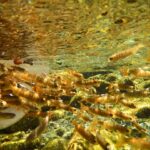
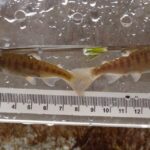

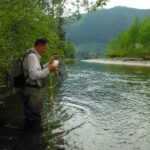

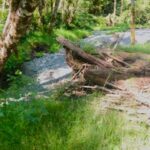
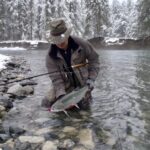
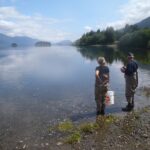

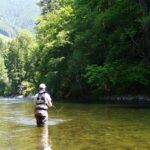
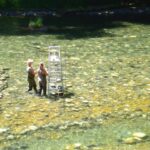

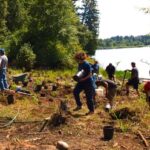
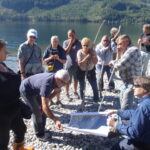
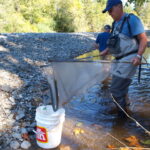
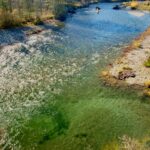
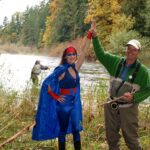
Recent Comments